Abstract
We conducted two field studies using a behavioral consultation approach to reduce children's problem behaviors in public school settings. The first study consisted of a descriptive analysis in which the students and their teachers were observed during naturally occurring classroom activities. The results of the descriptive analysis provided hypotheses regarding the operant function of the students' problem behaviors. The hypotheses were tested in the second experiment directly through a modified experimental analysis and indirectly through an evaluation of the treatment effects. The interventions were designed to disrupt the inappropriate response-reinforcer relation by discontinuing contingent reinforcement (i.e., extinction), providing the reinforcer contingent on appropriate play behaviors, and teaching the students verbal skills functionally equivalent to the inappropriate response. The classroom teachers were trained to implement the interventions and conduct the experimental analyses during classroom activities in which the problem behaviors occurred most frequently. The interventions were effective in decreasing the students' problem behaviors while concurrently increasing their appropriate verbal skills.
Full text
PDF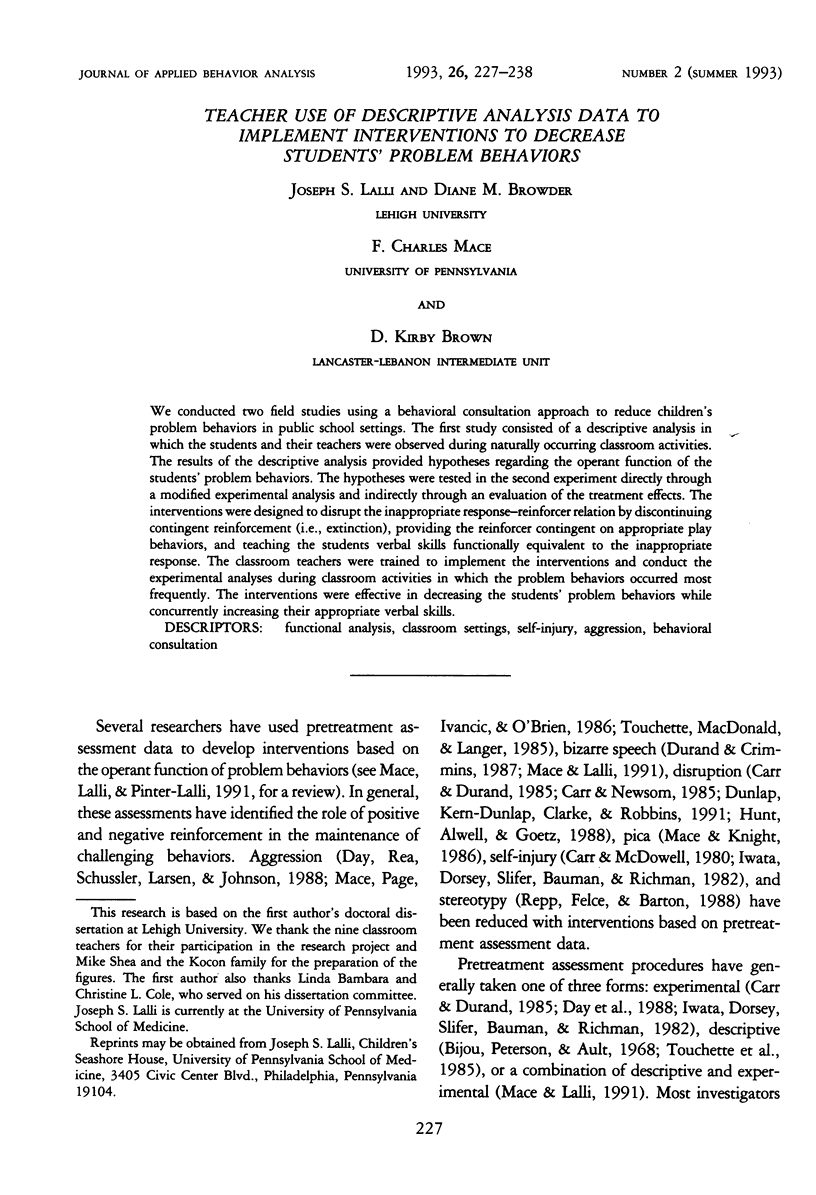
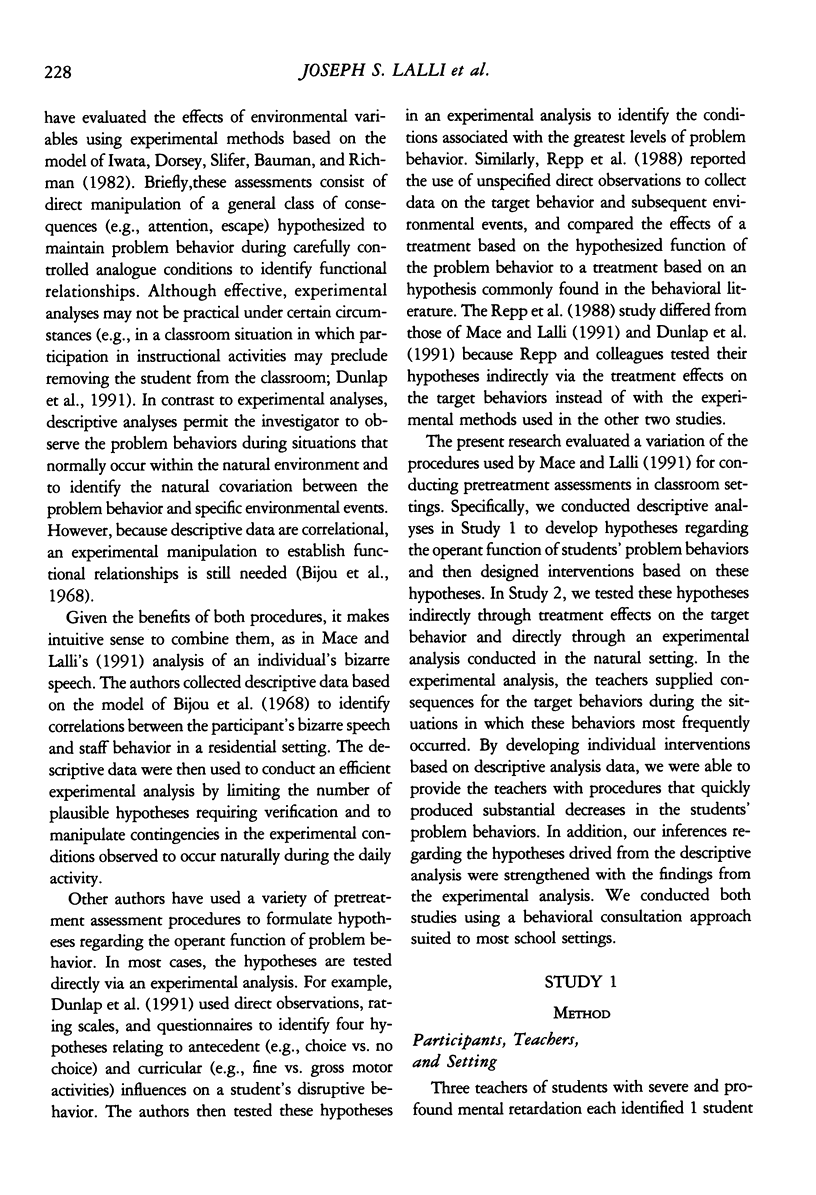
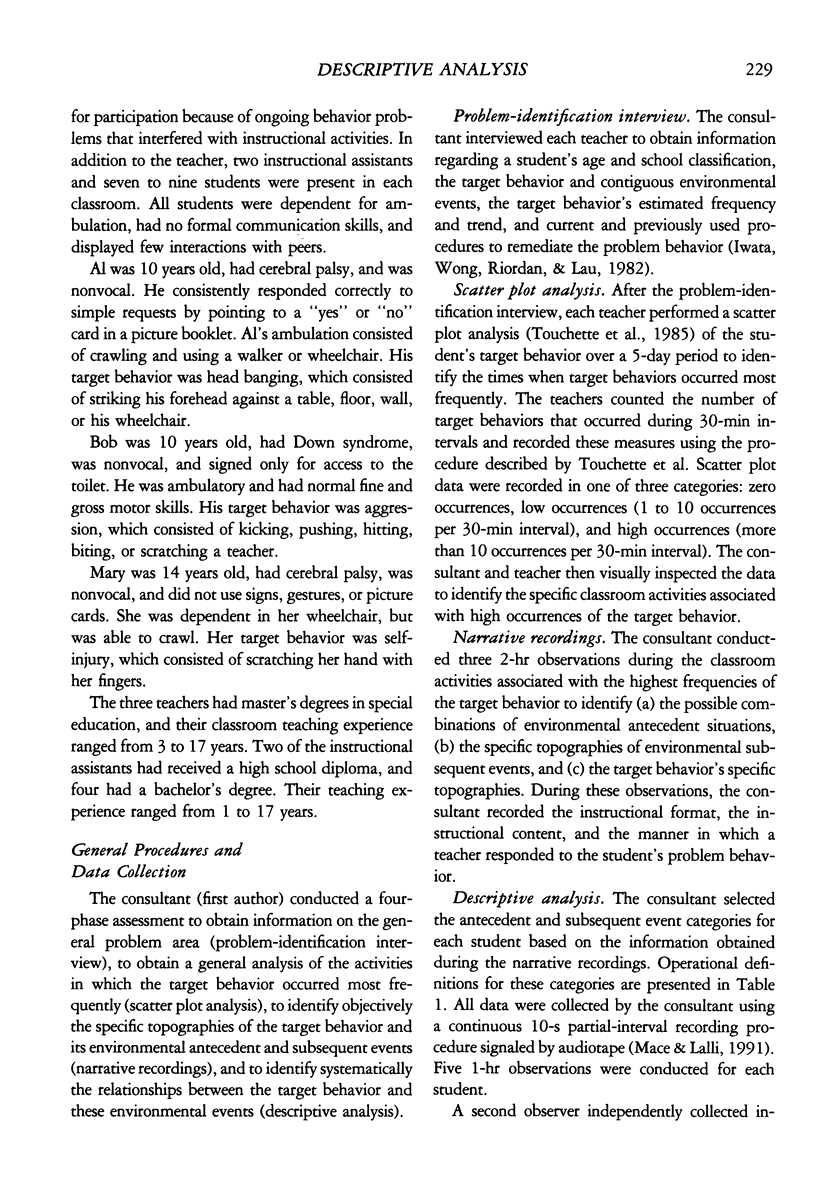
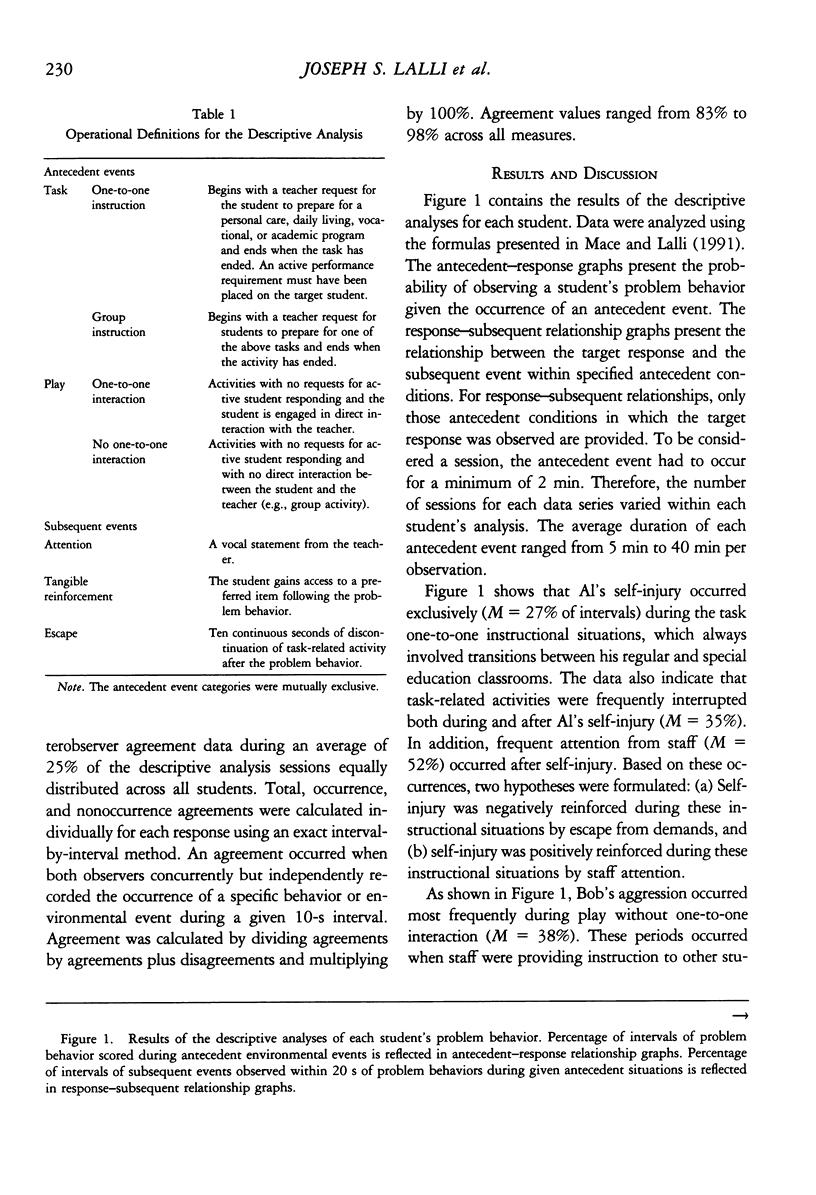
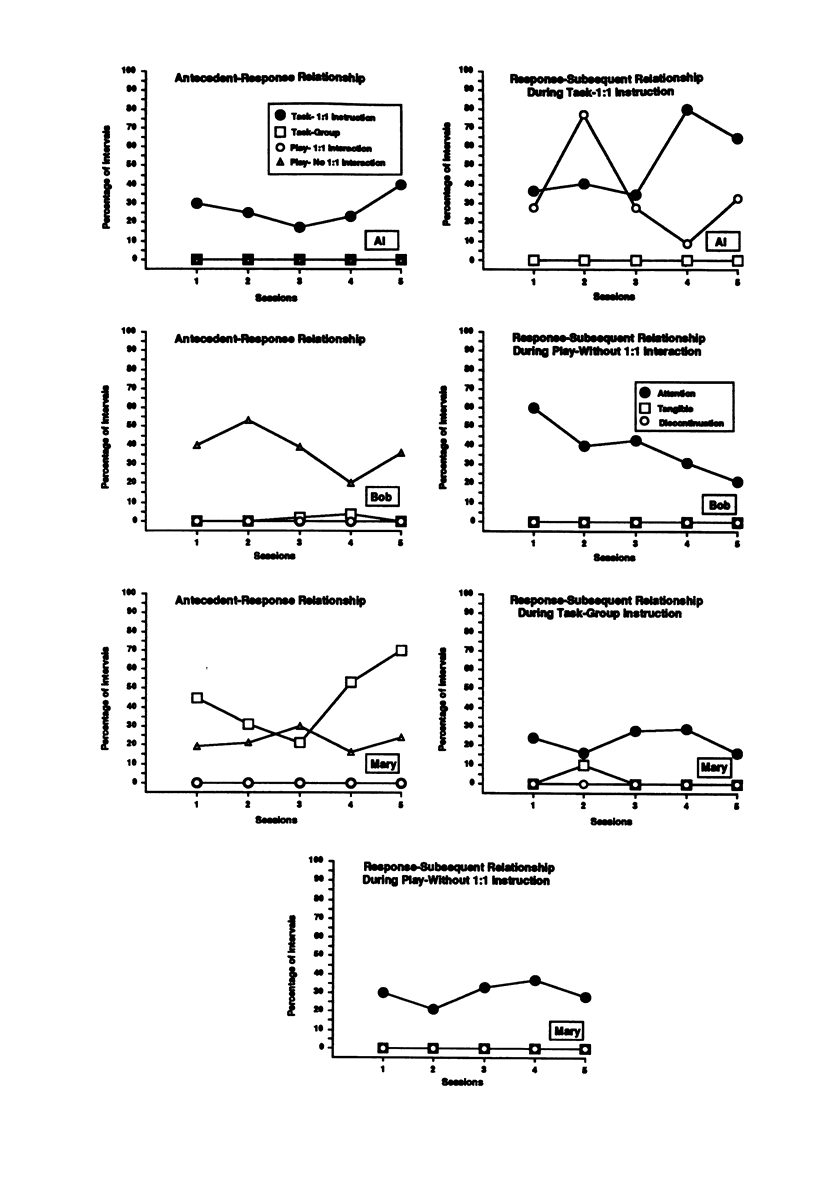
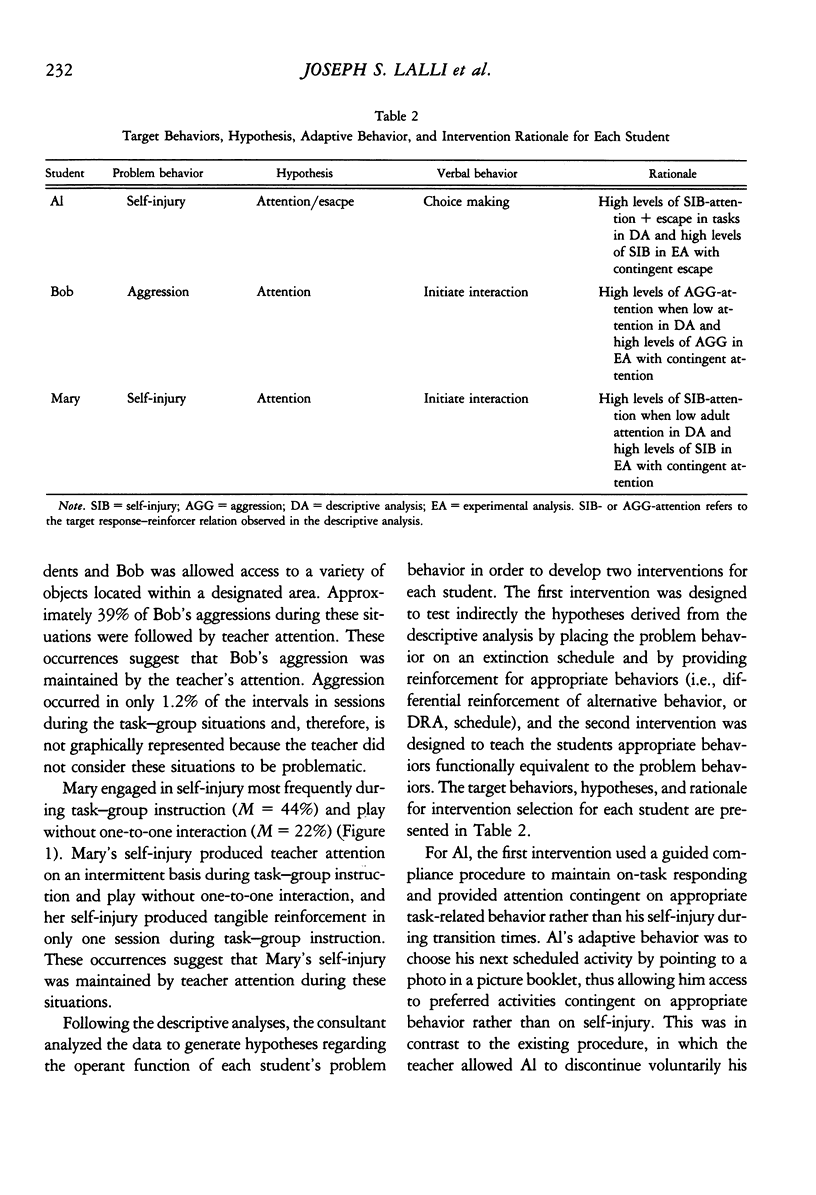
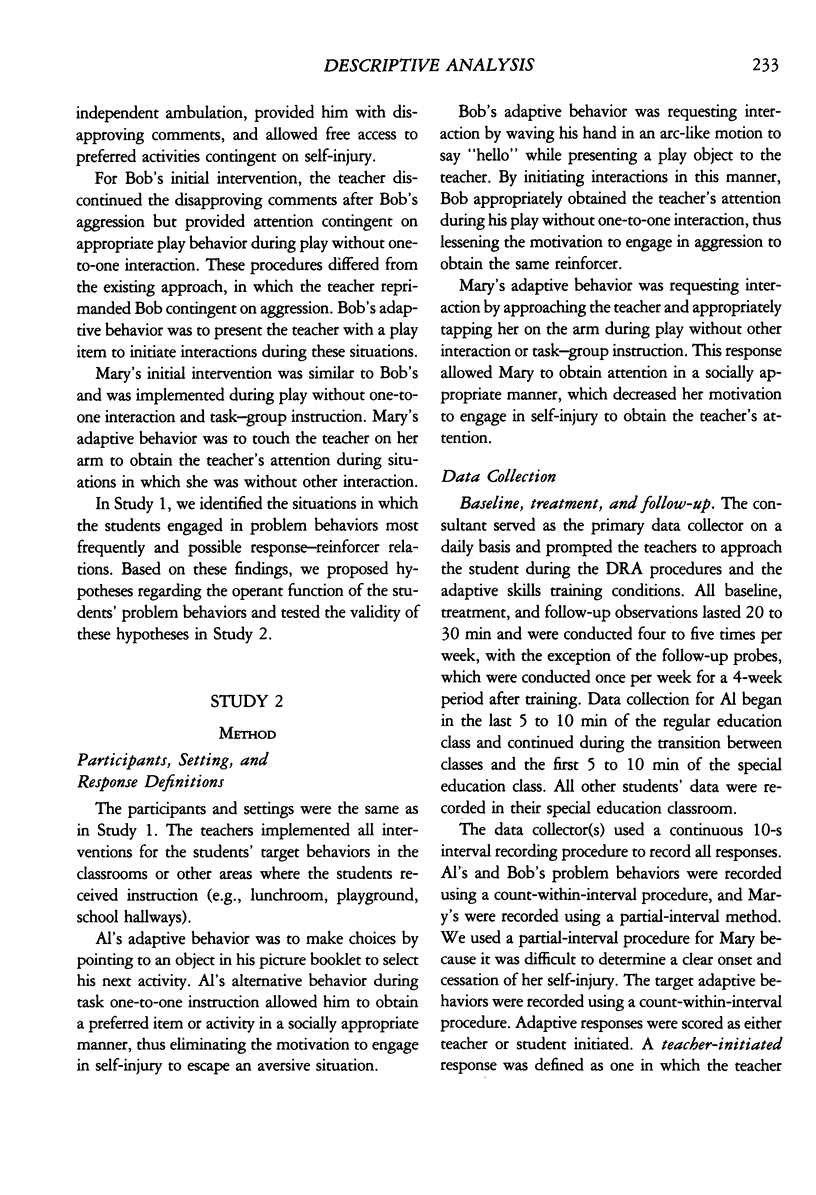
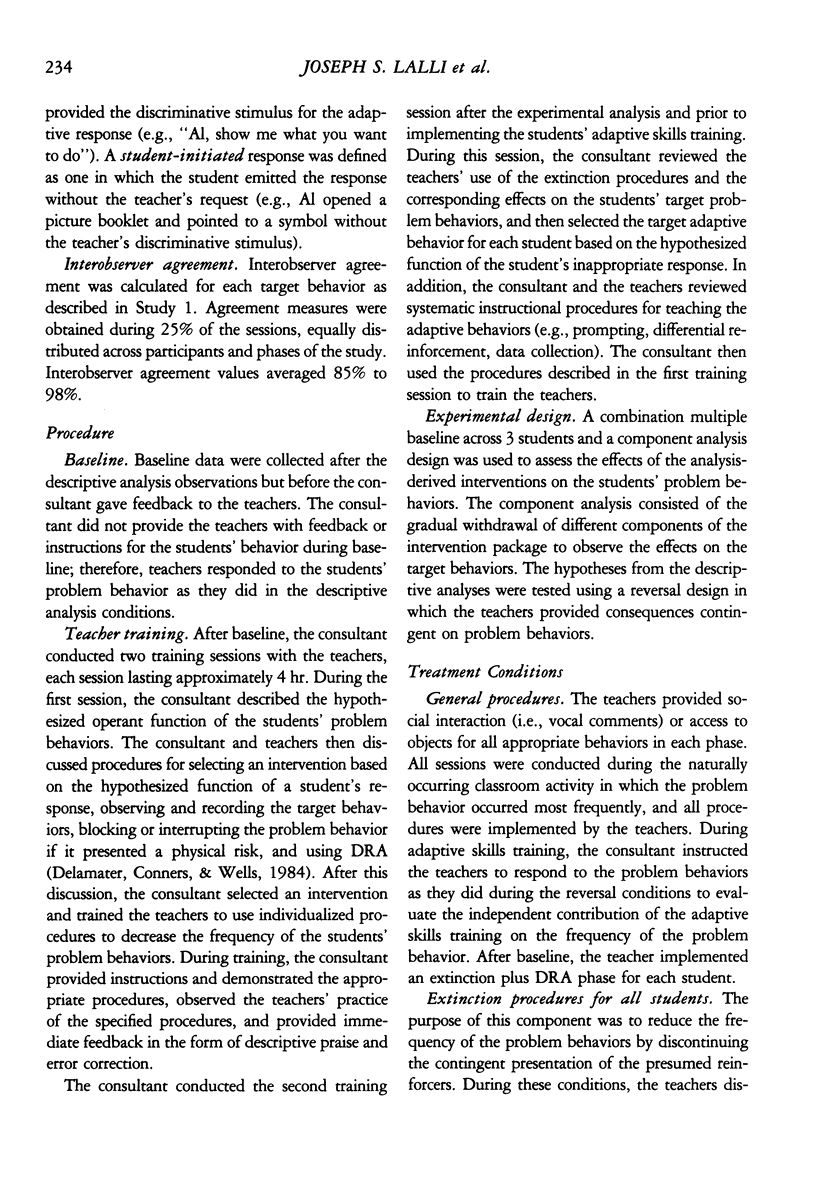
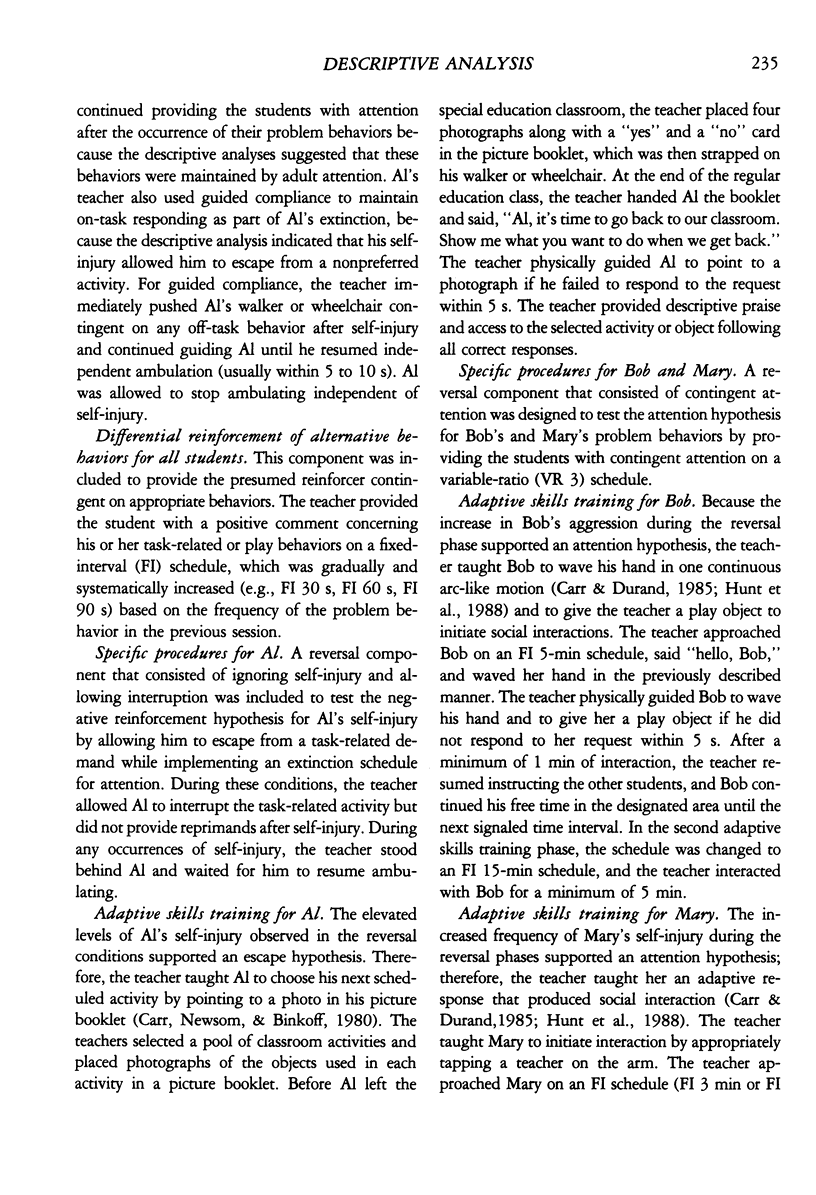
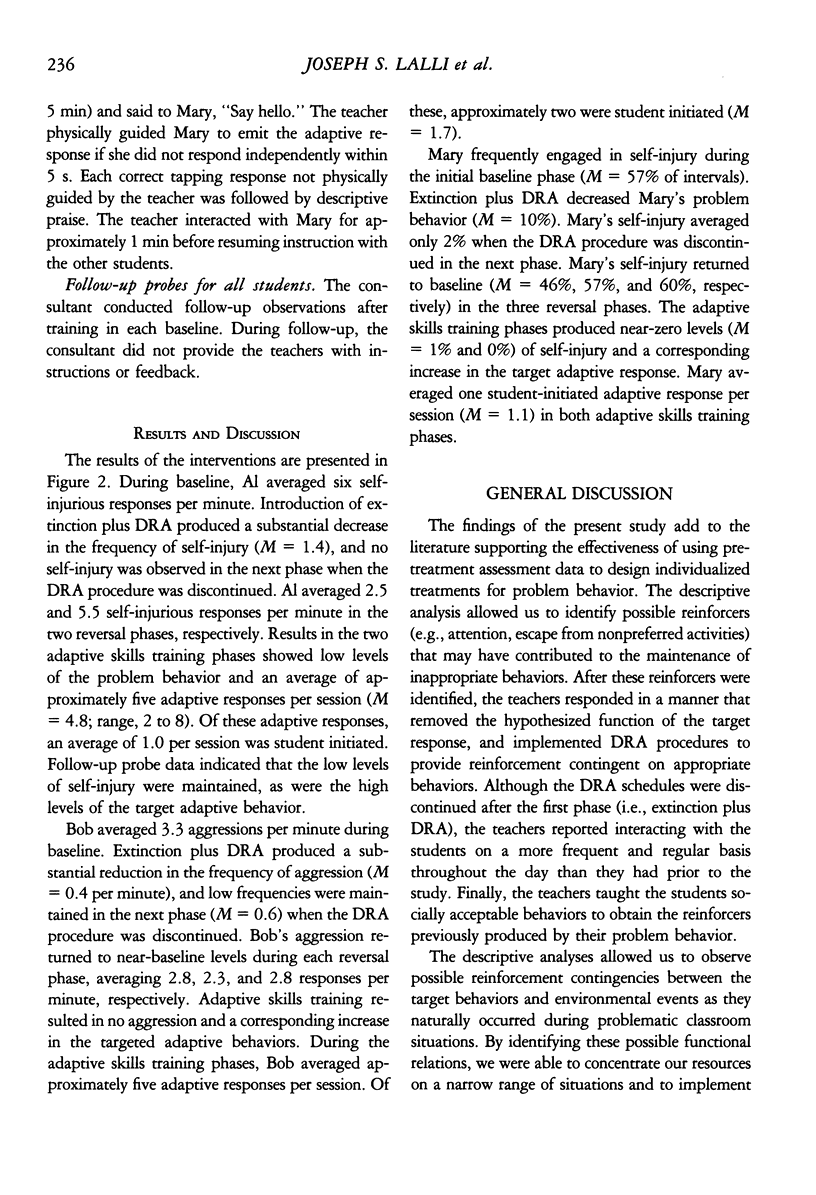
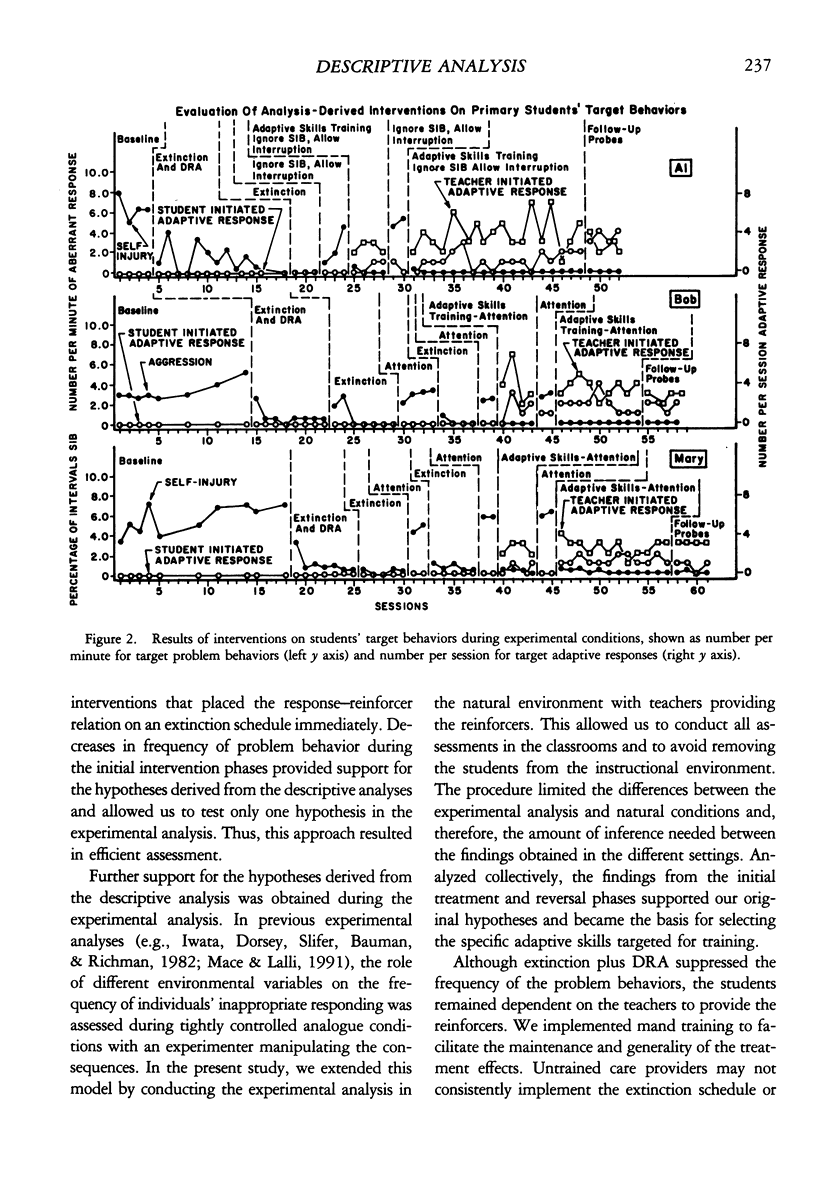
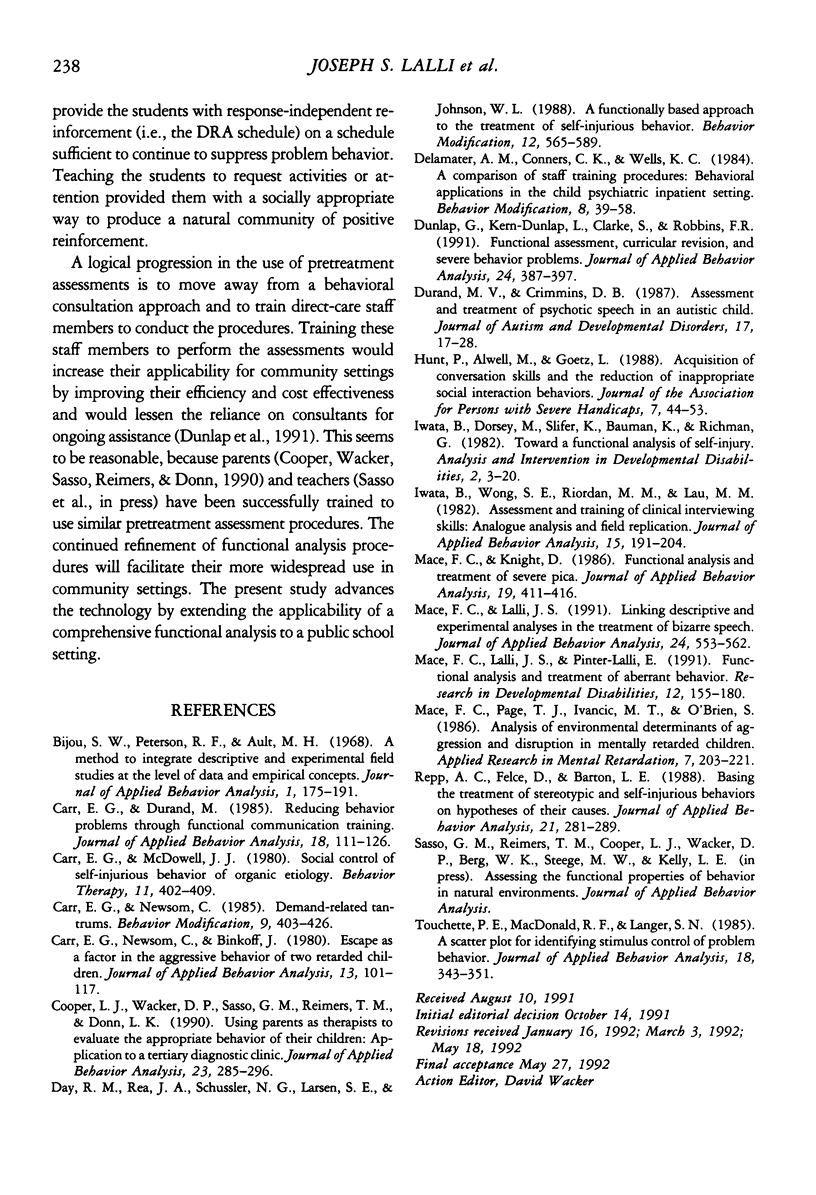
Selected References
These references are in PubMed. This may not be the complete list of references from this article.
- Bijou S. W., Peterson R. F., Ault M. H. A method to integrate descriptive and experimental field studies at the level of data and empirical concepts. J Appl Behav Anal. 1968 Summer;1(2):175–191. doi: 10.1901/jaba.1968.1-175. [DOI] [PMC free article] [PubMed] [Google Scholar]
- Carr E. G., Durand V. M. Reducing behavior problems through functional communication training. J Appl Behav Anal. 1985 Summer;18(2):111–126. doi: 10.1901/jaba.1985.18-111. [DOI] [PMC free article] [PubMed] [Google Scholar]
- Carr E. G., Newsom C. D., Binkoff J. A. Escape as a factor in the aggressive behavior of two retarded children. J Appl Behav Anal. 1980 Spring;13(1):101–117. doi: 10.1901/jaba.1980.13-101. [DOI] [PMC free article] [PubMed] [Google Scholar]
- Carr E. G., Newsom C. Demand-related tantrums. Conceptualization and treatment. Behav Modif. 1985 Oct;9(4):403–426. doi: 10.1177/01454455850094001. [DOI] [PubMed] [Google Scholar]
- Cooper L. J., Wacker D. P., Sasso G. M., Reimers T. M., Donn L. K. Using parents as therapists to evaluate appropriate behavior of their children: application to a tertiary diagnostic clinic. J Appl Behav Anal. 1990 Fall;23(3):285–296. doi: 10.1901/jaba.1990.23-285. [DOI] [PMC free article] [PubMed] [Google Scholar]
- Day R. M., Rea J. A., Schussler N. G., Larsen S. E., Johnson W. L. A functionally based approach to the treatment of self-injurious behavior. Behav Modif. 1988 Oct;12(4):565–589. doi: 10.1177/01454455880124005. [DOI] [PubMed] [Google Scholar]
- Delamater A. M., Conners C. K., Wells K. C. A comparison of staff training procedures. Behavioral applications in the child psychiatric inpatient setting. Behav Modif. 1984 Jan;8(1):39–58. doi: 10.1177/01454455840081003. [DOI] [PubMed] [Google Scholar]
- Dunlap G., Kern-Dunlap L., Clarke S., Robbins F. R. Functional assessment, curricular revision, and severe behavior problems. J Appl Behav Anal. 1991 Summer;24(2):387–397. doi: 10.1901/jaba.1991.24-387. [DOI] [PMC free article] [PubMed] [Google Scholar]
- Durand V. M., Crimmins D. B. Assessment and treatment of psychotic speech in an autistic child. J Autism Dev Disord. 1987 Mar;17(1):17–28. doi: 10.1007/BF01487257. [DOI] [PubMed] [Google Scholar]
- Iwata B. A., Wong S. E., Riordan M. M., Dorsey M. F., Lau M. M. Assessment and training of clinical interviewing skills: analogue analysis and field replication. J Appl Behav Anal. 1982 Summer;15(2):191–203. doi: 10.1901/jaba.1982.15-191. [DOI] [PMC free article] [PubMed] [Google Scholar]
- Mace F. C., Knight D. Functional analysis and treatment of severe pica. J Appl Behav Anal. 1986 Winter;19(4):411–416. doi: 10.1901/jaba.1986.19-411. [DOI] [PMC free article] [PubMed] [Google Scholar]
- Mace F. C., Lalli J. S., Lalli E. P. Functional analysis and treatment of aberrant behavior. Res Dev Disabil. 1991;12(2):155–180. doi: 10.1016/0891-4222(91)90004-c. [DOI] [PubMed] [Google Scholar]
- Mace F. C., Lalli J. S. Linking descriptive and experimental analyses in the treatment of bizarre speech. J Appl Behav Anal. 1991 Fall;24(3):553–562. doi: 10.1901/jaba.1991.24-553. [DOI] [PMC free article] [PubMed] [Google Scholar]
- Mace F. C., Page T. J., Ivancic M. T., O'Brien S. Analysis of environmental determinants of aggression and disruption in mentally retarded children. Appl Res Ment Retard. 1986;7(2):203–221. doi: 10.1016/0270-3092(86)90006-8. [DOI] [PubMed] [Google Scholar]
- Repp A. C., Felce D., Barton L. E. Basing the treatment of stereotypic and self-injurious behaviors on hypotheses of their causes. J Appl Behav Anal. 1988 Fall;21(3):281–289. doi: 10.1901/jaba.1988.21-281. [DOI] [PMC free article] [PubMed] [Google Scholar]
- Touchette P. E., MacDonald R. F., Langer S. N. A scatter plot for identifying stimulus control of problem behavior. J Appl Behav Anal. 1985 Winter;18(4):343–351. doi: 10.1901/jaba.1985.18-343. [DOI] [PMC free article] [PubMed] [Google Scholar]


